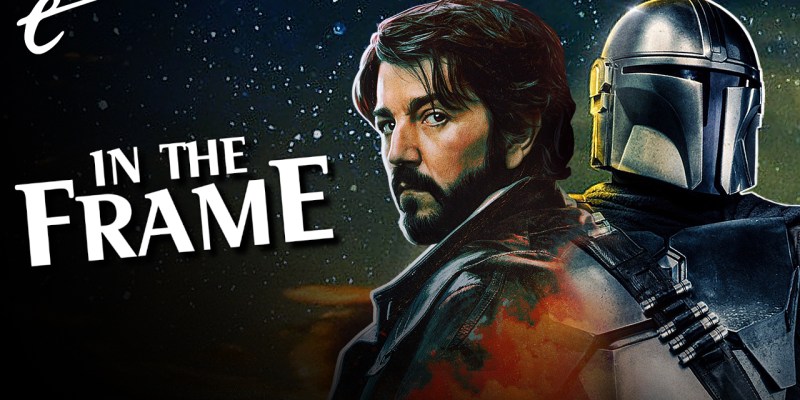With the premiere of the third season of The Mandalorian, there has inevitably been some debate about what the show means in the wake of Andor, with some pundits going so far as to suggest that the quality of Andor has made it “tough to love other Star Wars shows.”
This isn’t entirely fair. Obviously, Andor exists in a league of its own in terms of quality within a major franchise brand. However, it seems a little unfair to complain about The Mandalorian failing to live up to the ambition and craft of Andor. It seems more pertinent to ask why recent iterations of other major franchises like the Marvel Cinematic Universe or Star Trek have failed to produce a comparable work. After all, Star Wars already has a show as good as Andor: It’s called Andor.
The Mandalorian is doing something different within the larger Star Wars brand, scratching a different itch. There is undoubtedly some debate to be had about how effectively it is doing what it sets out to do, but it isn’t a problem that Jon Favreau is doing something different with The Mandalorian than Tony Gilroy is doing with Andor. It’s a big galaxy, even a long time ago and far, far away. There is room for variation.
That said, while it is worth acknowledging the differences between The Mandalorian and Andor, there is also some value in considering their similarities. In particular, it’s also worth exploring what those similarities have to say about the modern world. On the surface, there isn’t a lot of overlap between The Mandalorian’s loving homage to old-fashioned serialized adventure fiction and Andor’s engagement with the theory of political accelerationism, but the two do share a perspective.
At its core, boiled down to its essence, Star Wars is a story about the struggle against tyranny. This is not especially subtle. The Empire is styled to resemble Nazis, right down to calling their soldiers “stormtroopers.” The prequel trilogy is the story of a liberal democracy that slowly succumbs to fascism. Even in the sequel trilogy, General Hux (Domhnall Gleeson) is styled like a member of the alt-right. This is what Star Wars is — and always has been — at its core.
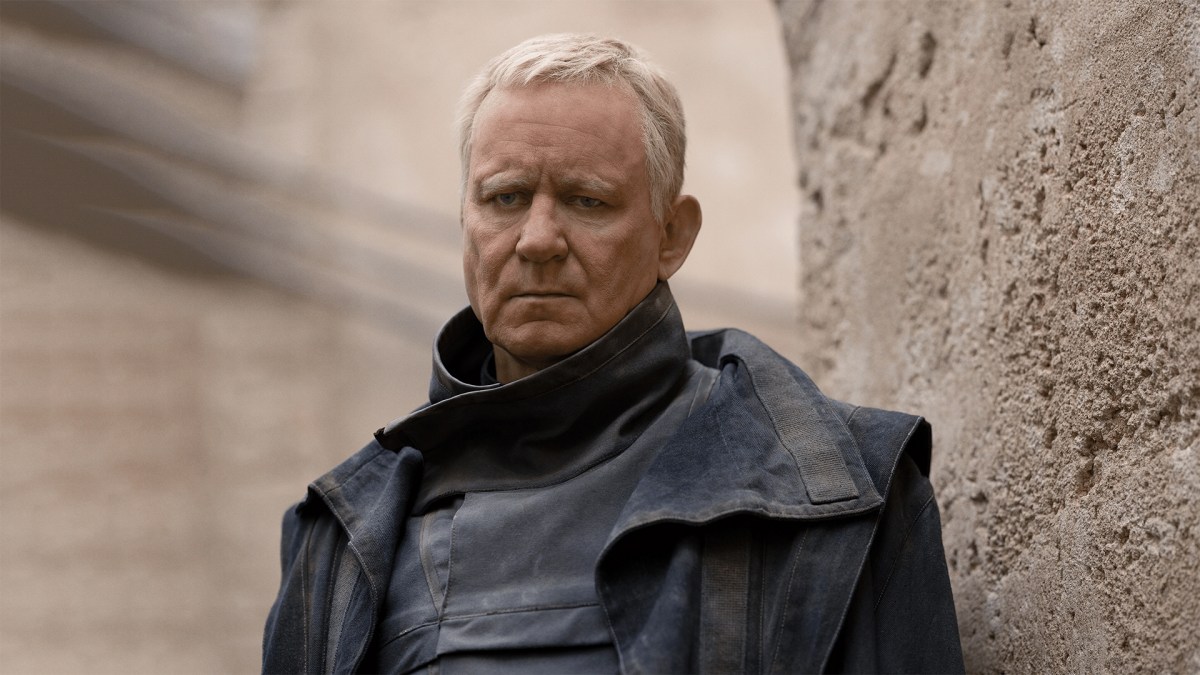
Both Andor and The Mandalorian understand the Empire as an imperial power. Andor dives into this idea in depth. Cassian Andor (Diego Luna) is an orphan named Kassa from the planet Kenari, a survivor of an indigenous population that was wiped out in the wake of a mining disaster. He has been separated from his sister. His name and his culture have been erased. There is no record of Kenari in official records; it may as well have never existed.
Andor explores the mechanics of the Empire, how it uses its power to bend planets and cultures to its will. In “Aldhani,” Lieutenant Supervisor Blevin (Ben Bailey Smith) uses a case of jurisdictional overreach from Syril Karn (Kyle Soller) to effectively annex the Morlana sector. In “The Eye,” Commander Jayhold Beehaz (Stanley Townsend) proudly explains how the Empire has destroyed the culture of Aldhani, reducing its population to cheap labor.
The Mandalorian doesn’t explore the insidious processes of colonialism in as much depth, but its protagonist, Din Djarin (Pedro Pascal), is also a survivor of a world destroyed by the Empire. In “The Mines of Mandalore,” while touring the ruins of their shared home planet — one bombarded by the Empire during the Night of a Thousand Tears — Bo-Katan Kryze (Katee Sackhoff) explains that the destruction of their world was more than just physical. “The Empire set out to punish us, to wipe away our memory,” she tells Djarin.
There is a reason why modern Star Wars has returned to this preoccupation with ascendant fascism. In recent years, there has been concern about the rise of right-wing extremism within democracies like France, Italy, Hungary and Poland. In the United States, the losing side of the 2020 presidential election stormed the Capitol Building in what Representative Bennie Thompson, the chair of the committee investigating the events, described as the “culmination of an attempted coup.”
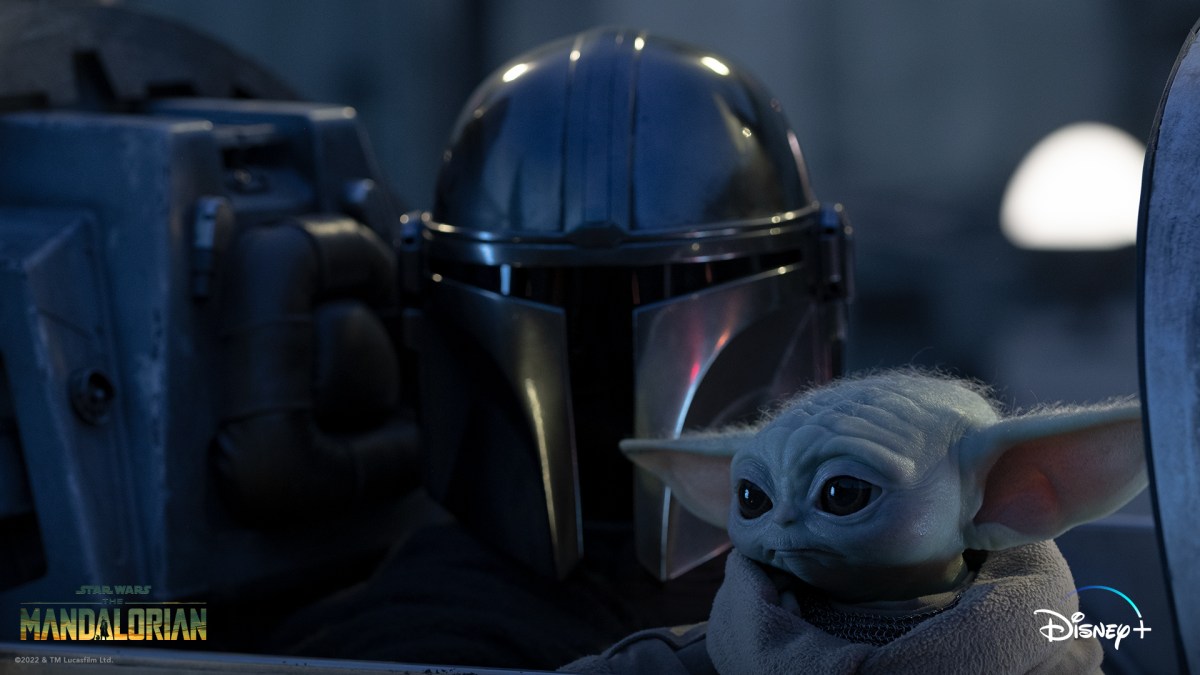
As such, it makes sense that the big recurring preoccupation within the modern Star Wars franchise has been about the best way to respond to tyranny. Fascism is ascendant again. There’s no denying that reality. The only question is how best to rally against it. After all, Star Wars is a story about a plucky rebellion banding together to overthrow an authoritarian regime. It has been suggested that this is one of the reasons Rogue One resonated in the wake of Donald Trump’s election.
However, Andor and The Mandalorian share a specific concern about the challenges in coming together for the greater good: the idea of factionalism and in-fighting. The heroes of the original Star Wars trilogy were always called “the Rebel Alliance,” but the franchise never really gave much thought to the underlying mechanics of that alliance. Heroes just aligned with one another, working in common purpose towards a shared goal. It was no more complicated than that.
In contrast, both Andor and the third season of The Mandalorian are about how difficult it can be to negotiate these sorts of relationships. This is more overt in Andor, given how the show devotes a lot of attention and time to the notion of alliance-building. Luthen Rael (Stellan Skarsgård) is a revolutionary trying to bring various paramilitary groups into a partnership against their common enemy. However, those factions all have their own perspectives and motives, often exclusively.
Throughout the first season, Luthen tries to convince anarchist Saw Gerrera (Forest Whitaker) to join his efforts. In “Narkina 5,” Gerrera points out the folly of trying to align so many ideologues with so many incompatible beliefs. He lists off the major factions opposed to Imperial rule. “Kreegyr is a separatist. Maya Pei’s a neo-Republican. The Ghorman front. The Partisan alliance. Sectorists. Human cultists. Galaxy partionists. They’re lost. All lost.”
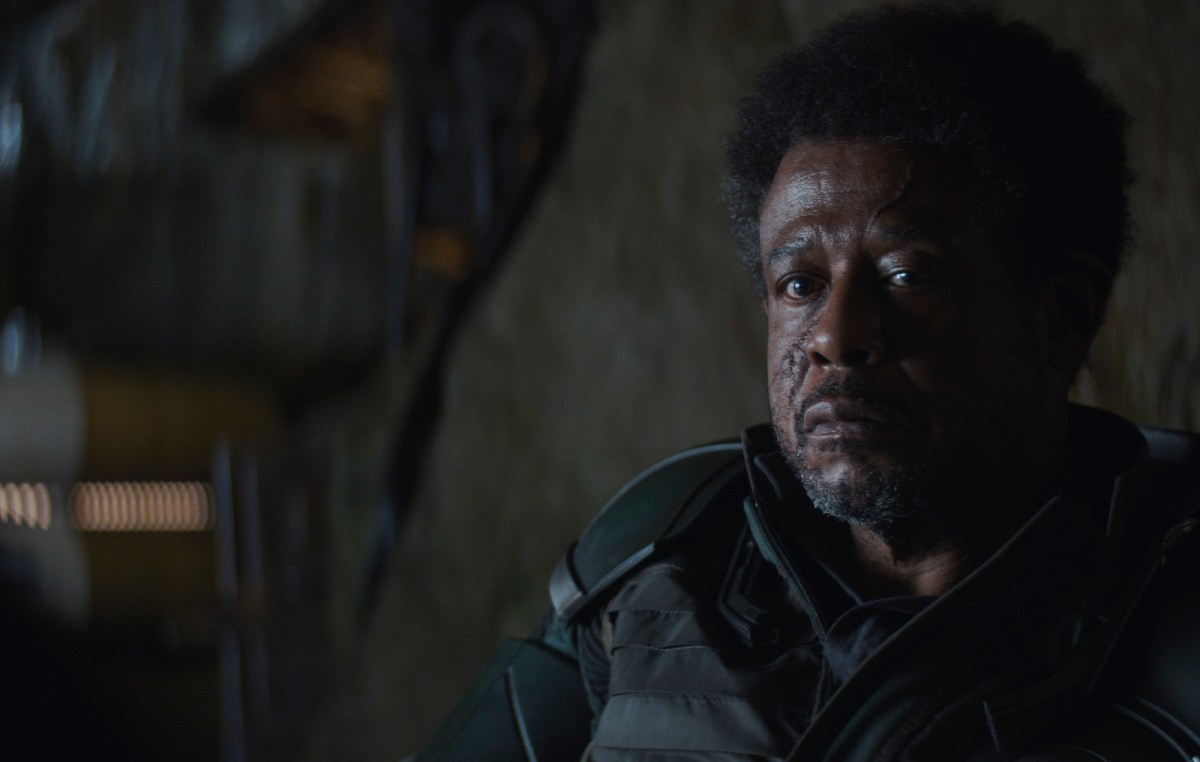
Andor suggests this disorganization gives the Empire a tactical advantage over its opponents. Diversity and plurality of opinion is perfectly valid, but it is luxury in an existential crisis. The Empire doesn’t have any ideological drive beyond ensuring its own continued existence. These smaller disorganized factions can be defeated or even played against one another, while the Empire continues to amass strength. The cast of Andor are literally and narratively fragmented.
The Mandalorian makes a similar point about Mandalorian culture. Djarin is confronted with various competing ideals of what it means to be a Mandalorian. He was raised in a cult known as “Death Watch,” adhering to a very traditional belief system. In contrast, Bo-Katan leads a rival faction with more progressive views. This extends to matters as fundamental as masks: Djarin’s removal of his mask led to ex-communication, but Bo-Katan happily lounges in her throne room without hers.
Like a lot of Star Wars, The Mandalorian has been classified as a “space western.” A foundational American myth, the western is an inherently individualist genre. It’s rooted in the idea of individual exceptionalism on a lawless frontier. This is obvious in “The Apostate,” the third season premiere of The Mandalorian. Djarin’s old friend Greef Karga (Carl Weathers) has reinvented himself as the “High Magistrate” of Nevarro, a world on the Outer Rim.
Karga has created a rich and thriving community. However, he seems resistant to being part of anything larger. When he loses his marshal, Cara Dune (Gina Carano), he refuses to turn to the New Republic for assistance because it might impede his independence. “The last thing we intend is to bow down to yet another far-off bureaucracy,” he explains. Instead, Karga would rather leave the post of marshal unstaffed than concede authority, leaving his planet effectively unprotected.
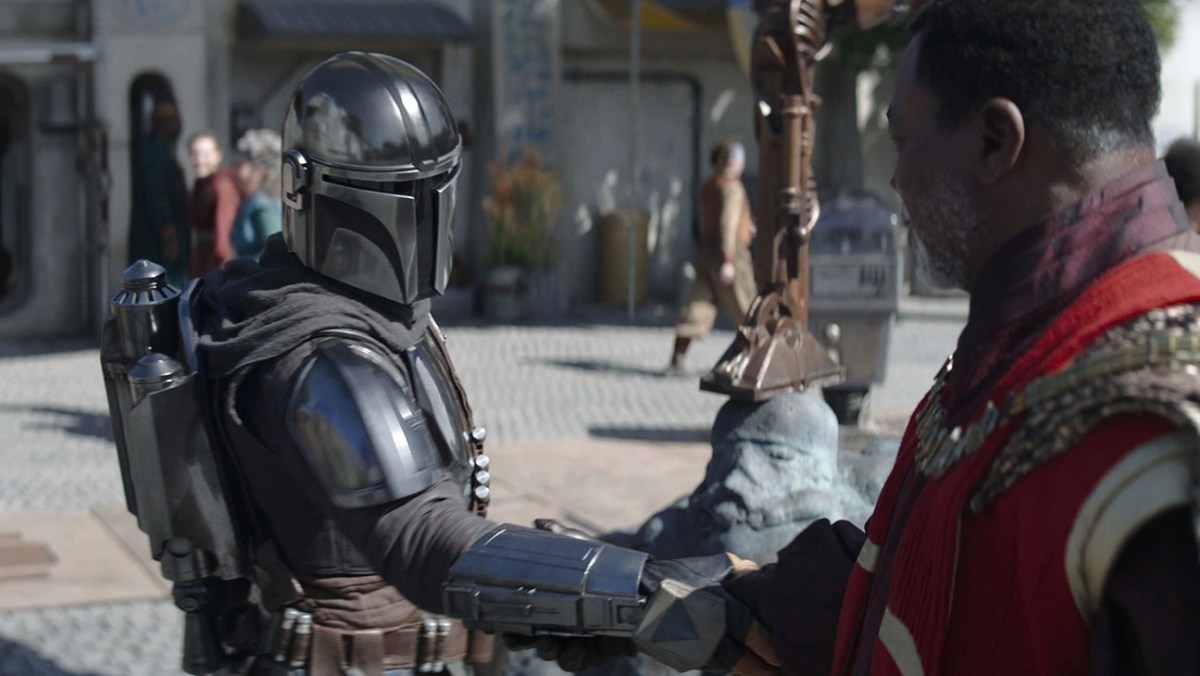
In “The Apostate,” when a band of pirates show up, Karga has to deal with the situation himself, albeit with some assistance from Djarin. This leads to a public firefight outside a schoolhouse involving the leader of the local community, which seems like a particularly ineffective way to run a planet like this. There is a sense that Karga’s romantic fantasy of frontier independence carries no small risk with it, particularly given he has antagonized Pirate King Gorian Shard (Nonso Anozie).
When Djarin visits Bo-Katan at her palace on Kalevala, he discovers that her forces have fragmented. Her dreams of reclaiming and reuniting Mandalore are lost. When Djarin challenges her, she responds that their people share no common identity. “Your cult gave up on Mandalore long before the Purge,” she chides him. “Where were you then? The Children of the Watch and all the other factions that came before fractured and shattered our people.”
As they tour the ruins of their planet in “The Mines of Mandalore,” Djarin remarks, “It must pain you to see it like this after witnessing its beauty.” She responds, “What pains me is seeing our own kind fight one another time and time again. Killing each other for reasons too confusing to explain.” There is a sense that the Mandalorians are weakened by their factionalism and need to work together to find a place in the universe. It is perhaps no coincidence that the mines lie “beneath the civic center.”
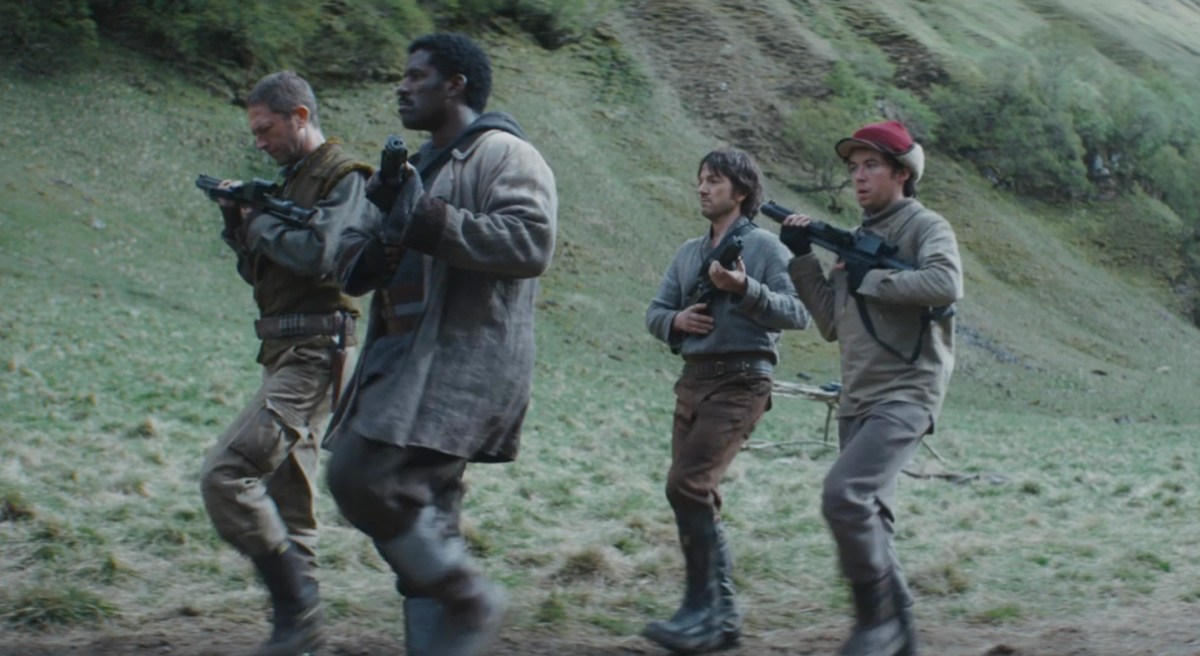
This is hardly the most subtle and nuanced point that can be made about any attempt to rally a resistance against fascism, but it has a lot of resonance. One of the challenges facing moderates and progressives in trying to push back against the tide of tyranny is the narcissism of small differences, the ineffectiveness of purity tests and circular firing squads. These relationships are complicated, and these discussions need to happen — but factionalism demonstrably hinders those opposing fascism.
Indeed, this is part of a larger trend in modern Star Wars. Recent films in the franchise like Rogue One and The Last Jedi, along with shows like The Bad Batch, have emphasized the importance of cooperation and collaboration more than rugged individualism, often stressing the idea that anybody can be a hero and that victory comes as a result of group effort and sacrifice. Andor and The Mandalorian are an extension of this idea, exploring how complicated forging those alliances can be.
Andor and The Mandalorian are very different shows, but they’re engaged with the same core idea that drives most modern Star Wars: It’s impossible to save the galaxy alone.
